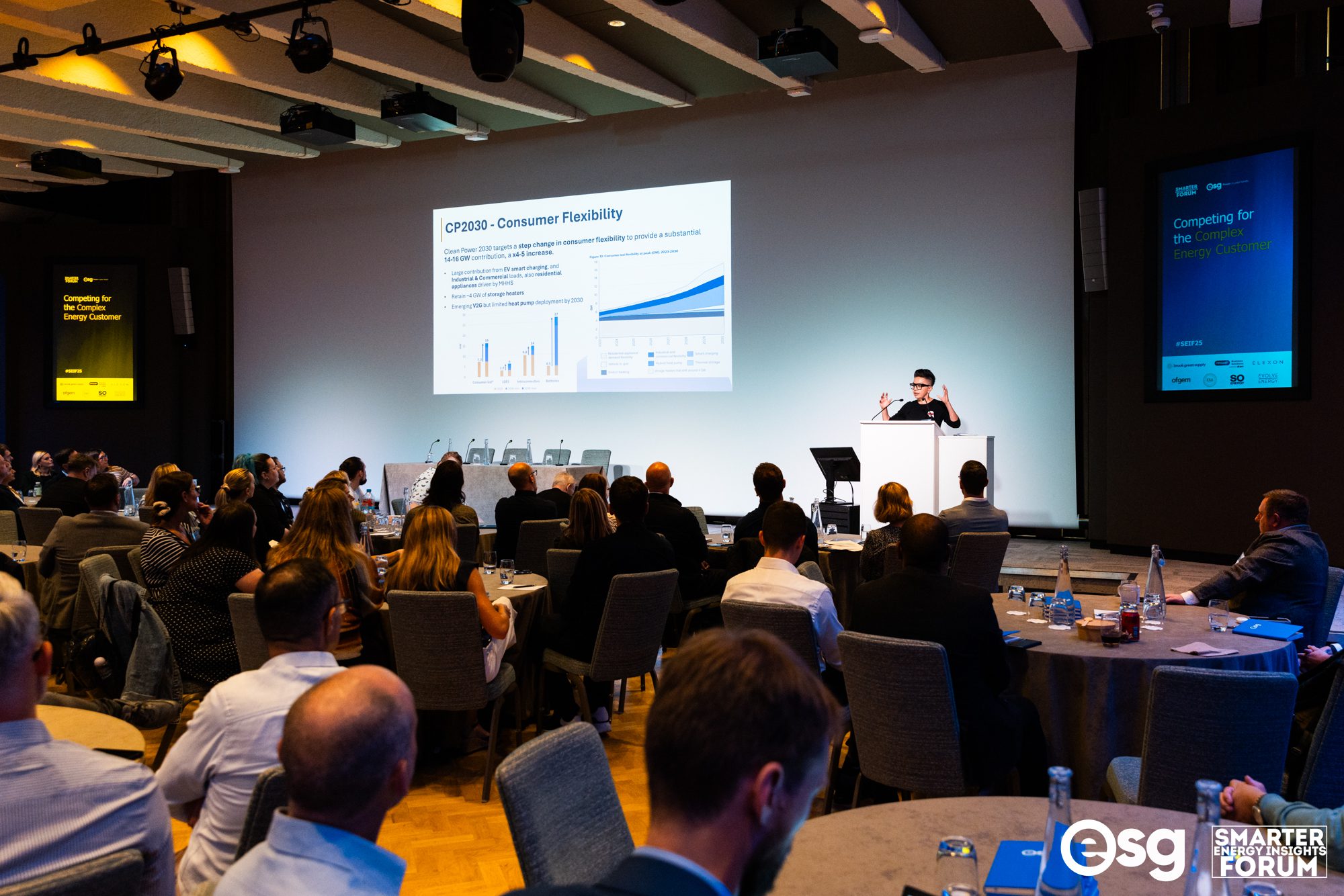News
Keeping you up to date on news, events and what’s happening at ESG…
Keeping you up to date on news, events and what’s happening at ESG…

The UK’s ambition to deliver a clean power system by 2030 depends on energy flexibility. Today, just 7.3 GW of consumer flexibility is available, however by 2030, that figure needs to grow to 16 GW. At our annual ESG Smarter Energy Insights Forum, Marzia Zafar, Deputy Director of Governance for Data and Digitalisation at Ofgem, set out a roadmap for how the UK energy industry must respond.
Her message was clear: energy flexibility must become simple, seamless, and accessible to everyone.
Marzia highlighted three key areas where progress to achieve this is essential.
The challenge goes beyond regulation. Millions of households, particularly EV and heat pump users, must become active participants in the grid. That requires propositions where devices flex automatically in the background, while customers simply experience the benefits through lower bills and a cleaner energy system.
Marzia’s message to the industry was simple: put the customer first. If flexibility isn’t easy, trusted, and rewarding, then the clean power system of 2030 will remain out of reach. The opportunity now lies in how regulators, suppliers, and innovators come together to make this transformation real.